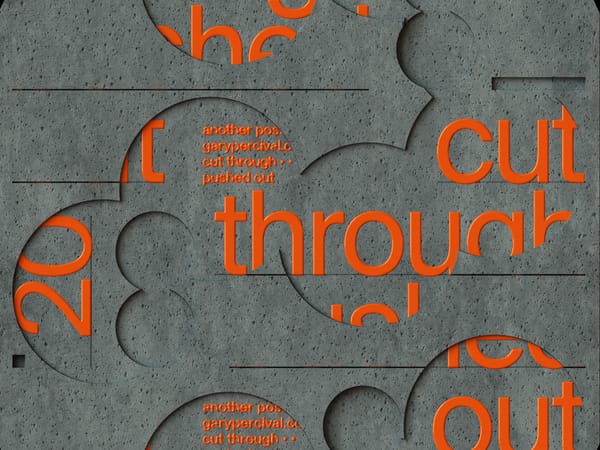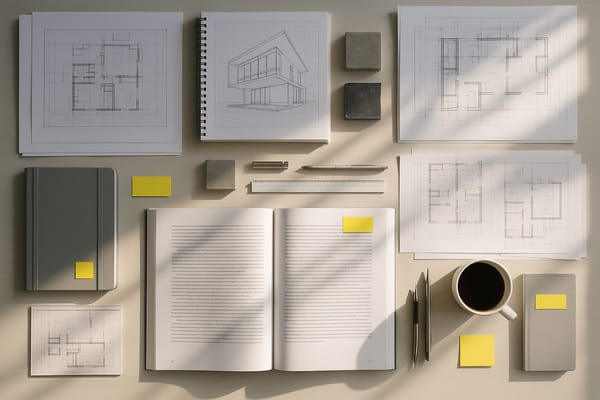Why others are using time blocking and how it's helped me be more productive
Have you ever wished for more time in the day, so you could accomplish more in the time you have?

Have you ever wished for more time in the day, so you could accomplish more in the time you have?
If this is the case, time blocking may be something to think about.
Time blocking is a technique in which you divide your day into specific time blocks for specific tasks. This can be a great way to increase your productivity and achieve your goals.
In this blog post, I'll explain why I started time blocking and how it's helped me be more productive. I'll also give you some pointers on how to get started with time blocking.
So, if you want to increase your productivity, keep reading!
1. What is time blocking and why should you use it?
What if it was possible to be more productive and less stressed? What if you could commit to your most important tasks without distraction or interruption?
What if a simple technique like time blocking would help you get more done in less time, reduce your stress, and stay organised?
I’ve been using this technique for years now. And while freelance graphic design is demanding work that requires long hours and lots of creativity, time blocking has helped me succeed. It’s also saved my sanity!
Time blocking is a productivity technique that’s been proven to be more effective than traditional methods. The key is to block out specific periods of time, and during that window, you commit to being fully focused and productive on your task.
For example, say you have a big project due at the end of the week. A traditional approach would be to work on it little by little every day until it’s finished. But with time blocking, you would dedicate a few hours on Tuesday and Wednesday to work solely on that project.
Not only are you more likely to get the project done sooner, but you’re also less likely to feel stressed about it because you know exactly when you’re going to work on it. And since you’re focused only on that task during that time, you’re less likely to be interrupted or distracted.
I like to use time blocking when I have a lot of small tasks that need to be done. For instance, I’ll dedicate an hour to answering emails, another hour to working on a poster design, and another hour to scheduling social media posts.
Doing this has helped me stay organised and prevented me from feeling overwhelmed by my freelance graphic design work. It also allows me to take breaks between tasks so I don’t get burnt out.

2. How time blocking has helped me be more productive
The freelance graphic design industry is booming, which means we all have a lot to do and not enough time to do it.
I've been working as a freelancer for over ten years, and one thing I've learned in that time is that if you want to stay sane while working as a freelancer, you need a way to manage your time.
Here's how this simple productivity hack has benefited my freelance career:
I can concentrate on a single task at a time: When I was working on a new project, I used to feel overwhelmed by all of the things I needed to do: research the topic, sketch out some ideas, create mock-ups, and so on.
But now that I'm using time blocking, I can divide those tasks into specific blocks of time and work on them one at a time without being interrupted.
This not only makes me more productive but also keeps me from feeling overwhelmed and stressed out.
It assists me in staying organised: With so many freelance projects going on at once, it's easy to lose track of what you're supposed to be working on and when.
Time blocking has helped me stay organised by allowing me to plan out my work week ahead of time and track my progress. This way, I always know what I'm supposed to be working on and when it's due.
It has assisted me in lowering my stress levels: Freelancing can be a very stressful job, especially if you have a lot of deadlines to meet. However, time blocking has helped me reduce my stress levels by allowing me to focus on one task at a time and avoid feeling overwhelmed.
When I'm not stressed about all the things I need to get done, I'm able to focus better and get more done in less time.
Overall, time blocking has been an incredibly effective way for me to manage my freelance career. It's helped me focus on one task at a time, stay organised, and reduce my stress levels.
If you want to be more productive and less stressed, I highly recommend you try time blocking. You will not be sorry!

3. How to Begin Using Time Blocking
You may be wondering why freelance graphic designers, illustrators, and other creative professionals need to use time-blocking techniques.
It's because we're all human, and as humans, we're prone to being distracted from our most important tasks by the numerous demands placed on us throughout the day.
It can be difficult to concentrate when you are constantly interrupted by phone calls or emails from clients or coworkers.
The good news is that there are numerous ways for freelance graphic designers to deal with this issue and remain productive throughout the workday.
This can be accomplished in a variety of ways, including blocking out time on your calendar for specific tasks, setting a timer to stay focused for a set amount of time, or working in short bursts.
Whatever method you choose, the important thing is to stick to it and not get sidetracked.
Here are seven tips for getting started with time blocking:
- Determine your most important tasks: The first step is to figure out what your most important tasks are. These are the tasks that will have the biggest impact on your business or life, so you want to make sure you're devoting enough time to them. Once you've identified your most important tasks, write them down in a list.
- Block out time for each task: The next step is to block out time for each task on your list. I like to do this on a weekly basis, but you can do it daily or even hourly if you prefer. The key is to be realistic about how much time you need to complete each task.
- Set a timer and focus: Once you've blocked out time for your tasks, set a timer and commit to focusing exclusively on that task until the timer goes off. This may be difficult at first, but it's important to stay focused if you want to be productive.
- Avoid email or social media: Try not to check your email or social media during working hours. Constantly checking these things can be very distracting and can reduce your productivity. Save these activities for your breaks or after you've completed your most important tasks for the day.
- Acknowledge distractions: Make a list of the distractions that are interfering with your work and devise methods to eliminate or reduce them. This could include turning off notifications on your phone or computer, scheduling specific times to check email and social media, or working in a quiet environment.
- Take breaks and reward yourself: Make sure to take breaks throughout the day, and reward yourself for completing your tasks. This will help you stay motivated and on track.
- Adjust as needed: Finally, don't be afraid to adjust your time blocks as needed. If you find that you're struggling to complete a task in the allotted time, try increasing the amount of time you've blocked out for it. Conversely, if you find that you're finishing a task early, try reducing the amount of time you've blocked out for it.
The bottom line is that time blocking can be a very effective way for freelance graphic designers to stay focused and productive throughout the day.
By following these suggestions, you'll be well on your way to becoming more productive and reaching your goals.

4. The Advantages of Increased Productivity
People are increasingly operating as freelancers or independent contractors.
This means they are not bound by an office schedule or a company desk but can work wherever they want! But it also means that freelancers frequently struggle to be productive, especially when they are only working on one project at a time.
Because there isn't much structure to the day, it's easy to become distracted by other commitments, emails, and social media notifications (or whatever else is buzzing in your pocket). And it can be difficult to focus when you don't have anyone telling you what needs to be done next.
That's where time blocking comes in: By committing to specific periods of focused work on the most important tasks without interruption from anything else, freelance designers like myself can be more productive and get more done in less time.

5. Troubleshooting tips for common productivity roadblocks
As a freelance graphic designer, I often struggled with productivity roadblocks that prevented me from getting my work done.
Here are some of the most common ones and how to troubleshoot them:
- Procrastination: This is by far the biggest roadblock for most people. The best way to overcome procrastination is to set deadlines and establish a routine. Start by allotting specific times for working on your projects and stick to them as closely as possible. Breaking your work down into smaller tasks can also help make it seem less daunting and more manageable.
- Distractions: Whether it's checking social media or getting lost in a Netflix marathon, distractions can easily kill your productivity. The best way to combat this is to disable notifications on all your devices, set aside specific times for breaks, and find a place to work where you won't be interrupted.
- Perfectionism: Trying to make everything perfect can often lead to wasted time and effort. Sometimes it's best to just get the job done and move on. The key is to focus on the essentials and not sweat the small stuff.
- Time management: This is a common issue for freelance professionals who have to juggle multiple projects at once. The best way to combat this is by using the time-blocking techniques and scheduling your time accordingly.
- Lack of motivation: When you're feeling uninspired, it can be hard to get started on your work. The best way to overcome this is by setting goals and breaking your projects down into smaller tasks. Identifying what you need to do and why you're doing it can help give you the boost you need to get started.
- Overwhelm: Trying to do too much at once can lead to overwhelm and even burnout. To avoid this, make sure to schedule breaks, take on only what you can handle, and delegate tasks when possible.
These are just some of the most common productivity roadblocks that people face. By troubleshooting them and implementing some of the tips above, you'll be well on your way to being a more productive freelance graphic designer.
6. When you feel like you can't keep up with time blocking, here's how to keep going
It's not always easy to stick to a schedule, especially if you're freelance or have a freelance job.
The best thing I've found is to prioritise your most important tasks for the day before anything else, even if it means getting up a little earlier. After you've scheduled time for your most important tasks, you can move on to scheduling the rest of your day.
Of course, there will be days when you simply cannot seem to complete all of your tasks. Don't berate yourself on those days. Just try your hardest and remember that tomorrow is a new day. If you stick with it long enough, it will become second nature.
If possible, combine this technique with other productivity techniques, such as setting deadlines for yourself or rewarding yourself with things like social media breaks when you finish a task early.
You'll discover that putting these things in place ahead of time makes it much easier to stay focused throughout the day without becoming overwhelmed.

7. The drawbacks of time blocking (if any)
While time blocking has many advantages, there are a few drawbacks to consider before implementing this method.
To begin, if you like to switch between tasks throughout the day, time blocking may not be for you. This technique requires you to concentrate on one task for an extended period of time, and switching gears in the middle of a block can be difficult.
Another potential disadvantage is that time blocking can be overwhelming for some people. If you're not used to working in this manner, it may take some time to adjust to the new routine. However, once you do, you will almost certainly notice a significant increase in your productivity.
In the end, the benefits of time blocking far outweigh the potential drawbacks, and I strongly recommend giving it a try if you're looking for a more efficient way to get things done.
If you're looking for a new way to increase your productivity and accomplish more in less time, I highly recommend giving time blocking a try. It's been a game-changer for me, and I'm confident it can do the same for you.



